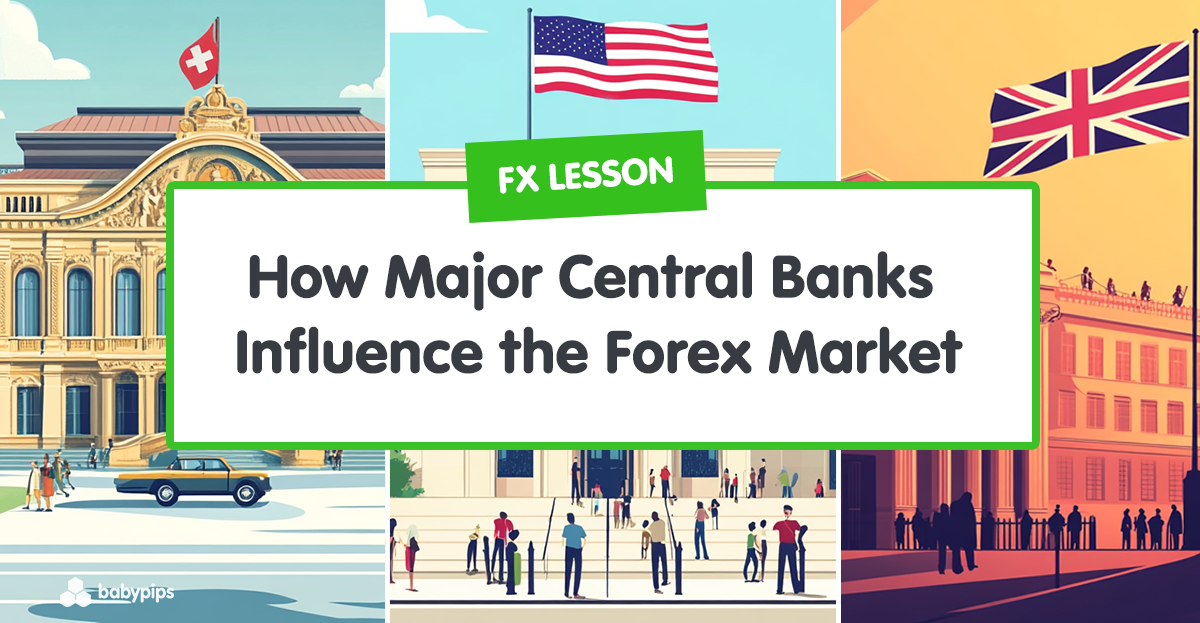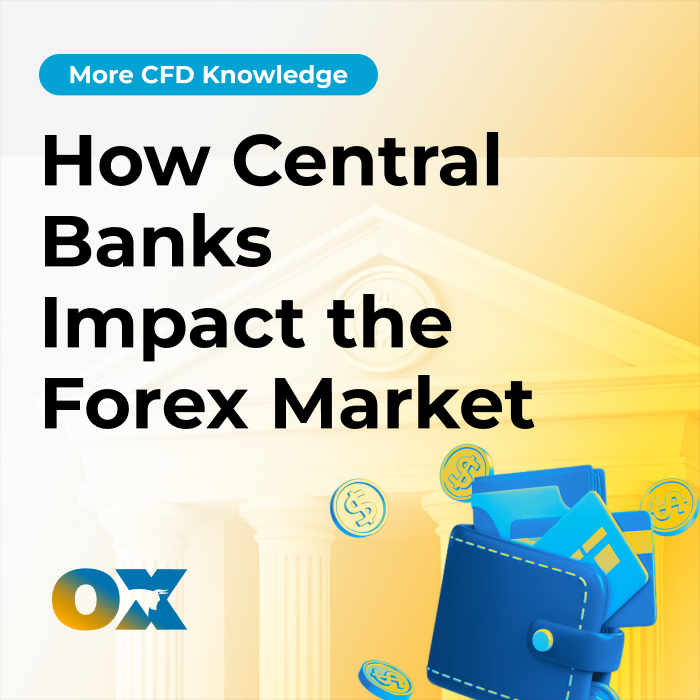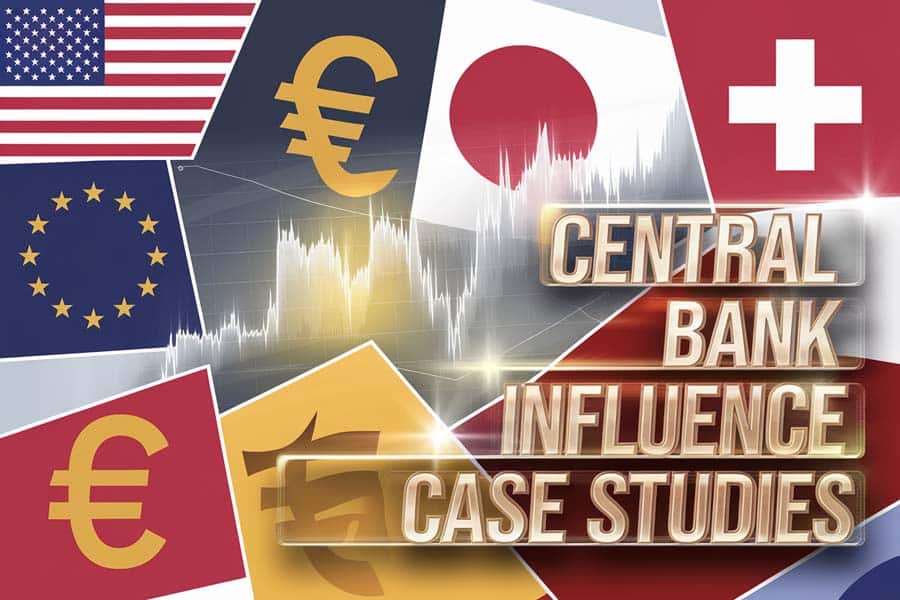Every time I watch a major currency pair suddenly spike or drop, I ask myself one thing—what did a central bank just say or do?
When I first started trading, I didn’t realize how often central banks were behind those big moves. I used to think it was just supply and demand or maybe some news event I missed. But over time, I learned the truth: central banks run the show in forex.
If you’re new to forex or still trying to connect the dots, this is what you need to know. Central banks have some of the biggest levers in the entire financial system. And they use them—often—to control their currencies.
In this guide, I’m going to break down exactly how they do it. We’ll cover:
- What central banks are and what they really do
- Why interest rates are such a big deal in forex
- How they manipulate markets through intervention and reserve policies
- Why guidance and press conferences can shake the market
- How to actually use this knowledge in your trades
Let me help you make sense of the macro chaos—because once you do, you stop reacting and start anticipating. Let’s dive in.
What Are Central Banks?
At their core, central banks are the institutions that manage a nation’s currency and monetary policy. Think of them like the brainstem of a country’s economy—they control the flow of money and keep inflation and growth in check.
Some of the major players you’ll hear about in forex include:
- Federal Reserve (USA)
- European Central Bank (ECB)
- Bank of Japan (BoJ)
- Bank of England (BoE)
These institutions don’t just watch the economy. They guide it—through interest rates, money supply control, and even direct market action.
Functions of Central Banks
When I finally looked into what central banks actually do, I was surprised how much power they hold. They manage inflation, promote employment, and stabilize currency value. And they do this through what’s called monetary policy tools—like changing interest rates or printing more money.
Their goal? Keep things balanced. Too much inflation or too little growth, and they’ll step in.

Interest Rate Policy and Its Market Impact
If you only learn one thing about central banks and forex, make it this: interest rates move currencies. Period.
When the Fed raises rates, for example, USD usually goes up. Why? Because investors want that higher yield, so they buy more dollars. When rates drop? Investors dump the currency looking for better returns elsewhere.
Why Interest Rates Matter in Forex
I remember when the Fed started its rate hike cycle in 2022. Every announcement was like a mini earthquake in the forex market. If a central bank is expected to hike but doesn’t, traders get spooked. If it surprises with a big increase? You see instant fireworks.
This is why traders track central bank calendars and forward guidance like hawks. Because yield-hungry investors are always watching.
Real Examples of Interest Rate Impacts
Let’s look at how real rate decisions affected the markets. This table below sums it up better than I could:
| Central Bank | Action | Date | Currency Pair Impact |
|---|---|---|---|
| Federal Reserve | +0.75% rate hike | Jun 2022 | USD/JPY soared from 129 to 137 |
| European Central Bank | +0.50% hike (first in 11 years) | Jul 2022 | EUR/USD jumped above 1.0200 |
| Bank of Japan | No change (dovish stance) | Throughout 2022 | JPY weakened vs all majors |

Currency Market Interventions and Reserve Management
Here’s something that caught me off guard when I first saw it: central banks can literally step into the market and BUY or SELL their own currency. Yep. That’s called a currency intervention.
Japan did it back in 2022 when the yen was getting crushed. The BoJ bought massive amounts of yen to stop the slide. And it worked—at least for a while.
Direct and Coordinated Market Interventions
Sometimes a central bank acts alone. Other times, it partners up with others (like during a crisis) to move the market. This type of action is rare, but when it happens, it causes massive volatility. Traders drop everything to watch it unfold.
I remember the SNB’s surprise unpegging of the franc in 2015. That was technically a non-intervention—they stopped defending a level. And it caused one of the biggest one-day currency moves in history.

Managing Foreign Exchange Reserves
Central banks also hold reserves in foreign currencies. If their own currency gets too strong, they might sell it and buy other currencies to push it back down. If it’s crashing? They’ll do the opposite.
This is especially common in export-driven economies. A strong currency makes exports more expensive, so they’ll actively manage it to keep their products competitive abroad.

Central Bank Tools Beyond Rates
Interest rates aren’t the only way central banks steer the forex market. Sometimes, they go even bigger—using tools like Quantitative Easing (QE) or money supply controls. These methods don’t always make headlines, but they absolutely move currencies.
Quantitative Easing and Money Supply
I remember when the Federal Reserve began QE in response to the 2008 crisis. They started buying long-term bonds and mortgage-backed securities to inject cash into the economy. The result? Massive USD depreciation over the next two years. Traders piled into gold and AUD like it was the apocalypse.
Why? Because increasing the money supply usually devalues a currency. There’s simply more of it in the system. And just like anything else, the more there is, the less it’s worth.
The opposite is also true. When central banks tighten and reduce liquidity—like during QT (Quantitative Tightening)—their currency tends to strengthen. Less supply = more value.
Inflation Targeting and Forex Strategy
Central banks live and breathe inflation. If inflation gets too hot, they’ll slam the brakes with rate hikes or policy tightening. If it’s too cold, they’ll juice the economy with stimulus.
As a trader, this is where you need to watch CPI (Consumer Price Index) reports like a hawk. When inflation runs high, expect hawkish tones from central banks. And when inflation dips, you’ll hear doves cooing. These tones shape currency expectations before policies even change.
Forward Guidance and Trader Sentiment
This part took me the longest to get right. It’s not just what central banks do—it’s what they say they might do. This is called forward guidance, and it’s pure gold for anticipating market moves.
Reading Central Bank Statements
I always read the FOMC minutes word-for-word. Not because I’m a nerd (okay, maybe a little), but because the market reacts hard to tone and phrasing.
For instance, when the Fed starts using words like “persistent inflation” or “restrictive for longer”, traders know what’s coming—tight policy, stronger dollar. Conversely, dovish language like “monitoring lag effects” hints at easing and weaker USD.
Same goes for the ECB, BoE, and others. Every word counts. These banks spend days crafting their statements because they know the entire trading world is watching.
Market Sentiment and Volatility
Even if a rate stays unchanged, the market can swing wildly based on expectations. That’s why I always keep an eye on economic calendars, forward projections, and analyst consensus. When central bank actions beat—or miss—those expectations, volatility erupts.
And volatility, for traders like us, is both opportunity and risk. Knowing how the market feels about central banks gives you an edge before the candles explode.
What Happens to Forex Pairs When Central Banks Raise Rates?
When a central bank raises interest rates, its currency usually strengthens. Why? Because higher rates attract more investors seeking yield. So more people buy that currency to earn better returns, which pushes its value up. For example, when the Fed raised rates steadily in 2022, the U.S. dollar surged against the yen and euro.
Why Do Central Banks Intervene in Currency Markets?
Central banks intervene when they feel their currency is moving too fast or too far in one direction. Maybe their export economy is being crushed by a strong currency, or inflation is spiking due to a weak one. In those cases, they’ll step in—sometimes by selling or buying currencies directly—to stabilize things. It’s like pulling the emergency brake.
How Can I Trade Based on Central Bank Announcements?
I always prep for central bank announcements the same way. First, I read the forecast and analyst expectations. Then I set alerts on economic calendars. When the announcement drops, I focus on two things: the actual decision and the tone of the statement. If the bank surprises markets or changes its language, that’s where the trade is. Just remember—move fast, but think first. Central bank volatility can be intense.
Recap of Key Points
Central banks aren’t just background noise in forex—they’re the headline act. From interest rate decisions and forward guidance to direct market interventions and QE, their tools are powerful and far-reaching. I’ve seen entire currency pairs reverse trends just because of one comment from a central banker.
If you’re serious about forex trading, you have to watch central banks like a hawk. Understand their goals. Track their moves. Read between the lines. This is where smart traders win while the rest are still scratching their heads.
In the end, trading forex without watching central banks is like sailing without checking the weather. You might get lucky—but odds are, you’ll get wrecked. So stay informed, stay sharp, and use their signals to chart your next move.
